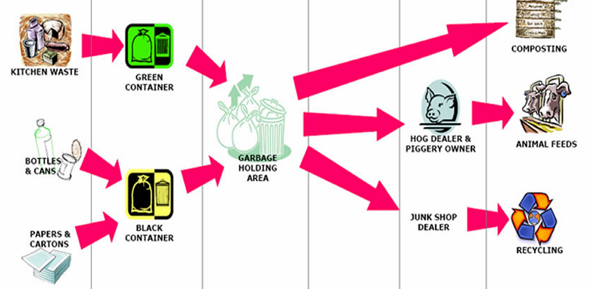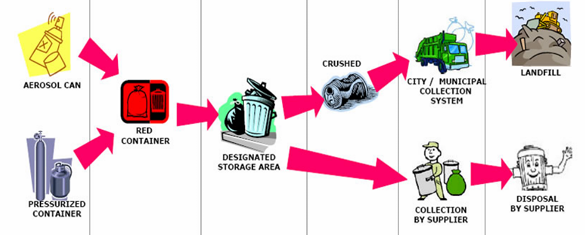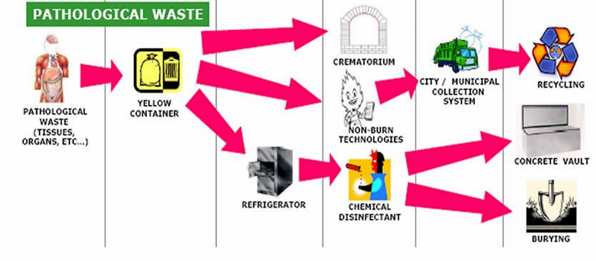Guidelines on waste disposal
1/20
There's no tags or description
Looks like no tags are added yet.
Name | Mastery | Learn | Test | Matching | Spaced |
|---|
No study sessions yet.
21 Terms
The effective management of health care waste
considers the basic elements of waste minimization, segregation and proper identification of the waste.
Segregation
is the process of separating different types of waste at the point of generation and keeping them isolated from each other.
Infectious waste
This waste handling is for?

Aerosol and Pressurized container
This waste handling is for?

Infectious waste
This waste handling is for?

Chemical waste
This waste handling is for?

Sharps
This waste handling is for?

Expired pharmaceutical waste
This waste handling is for?

Radioactive waste
This waste handling is for?

Pathological waste
This waste handling is for?

Black
Non-infectious dry waste
Green
Non-infectious wet waste (kitchen, dietary etc.)
Yellow
Infectious and Pathological waste
Yellow with black band
Chemical waste including those w/ heavy metals
Orange
Radioactive waste
Red
Sharps and pressurized containers
TRUE
TRUE OR FALSE: Highly infectious and other hazardous waste should, whenever possible, be treated immediately
Cytotoxic waste
most of which is produce in major hospital or research facilities, should be collected in strong, leak proof containers clearly labeled “Cytotoxic wastes”.
TRUE
TRUE OR FALSE: Radioactive wastes should be segregated according to its physical form: solid & liquid and according to its half-life or potency: short-lived and long-lived
TRUE
TRUE OR FALSE: Waste with a high content of heavy metals (e.g. cadmium or mercury) should be collected separately. These wastes can be sent to waste treatment facility available in the area.
FALSE
TRUE OR FALSE: Aerosol containers should be burnt or incinerated.